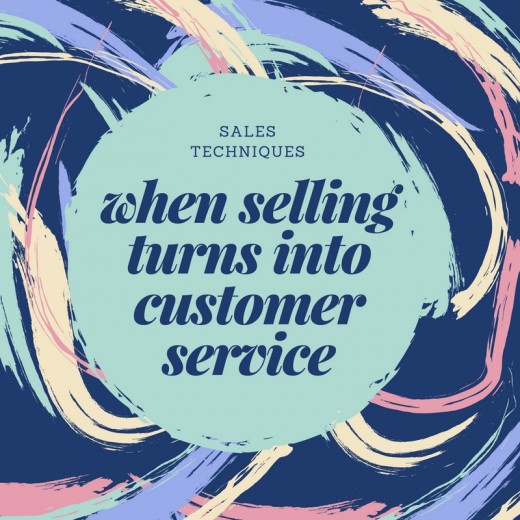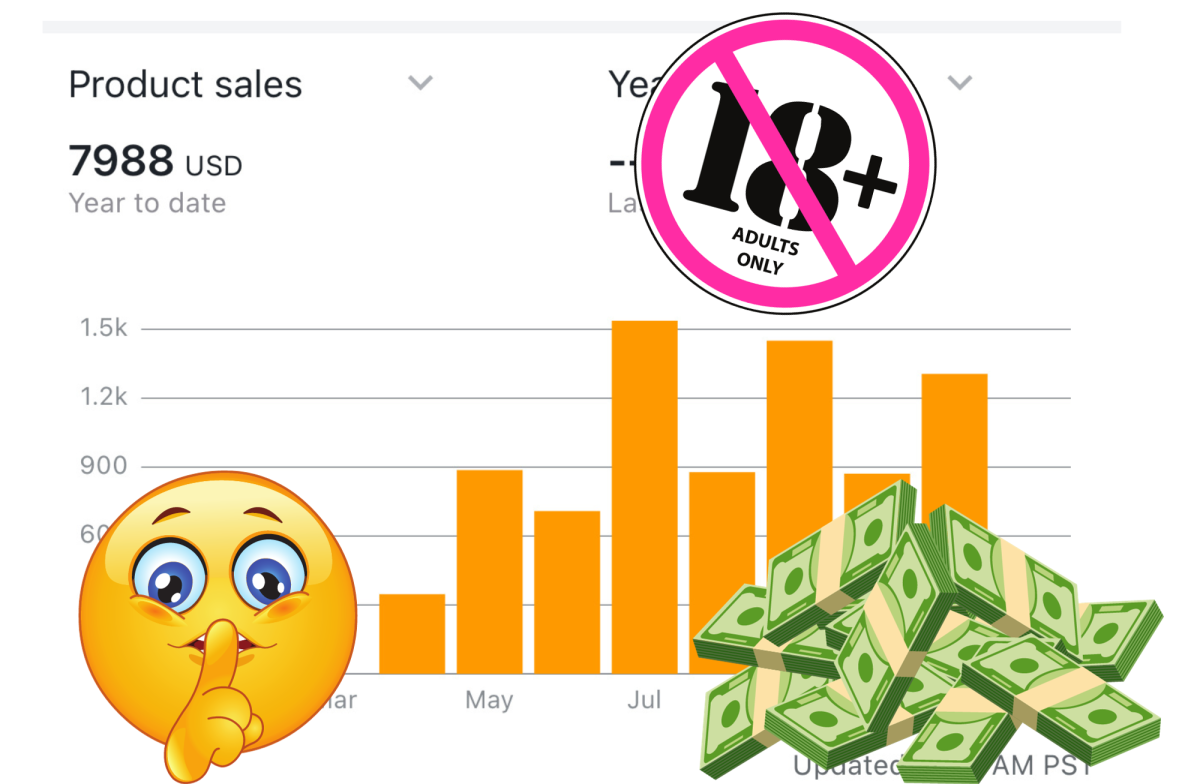Sales Techniques: When Selling Turns Into Customer Service

Woohoo! The sale closed and the money is coming in. Now the interaction between salesperson and customer becomes more customer service oriented: Following up on the details of the order, "babysitting" the job as it progresses and final delivery of products or services. These points of contact are great opportunities to build relationships with customers. However, it also creates opportunities to lose sales. Why?
Customer service contact by salespeople takes time away from sales! Every action and interaction that is spent on an already closed order detail is a lost opportunity to connect with another new prospect or possibility.
Some salespeople make the mistake of operating primarily in the post-sale service mode. It's comfortable and it looks like they're working. They're visiting customers, making phone calls, writing emails. But they're connecting with those who are already sold. Then when one of those customers discontinues buying, they have no sales prospects ready to fill the void.
This scenario represents a huge challenge for both salespeople and business owners, especially for small business owners who may also be filling a sales role. In the following segments, we'll discuss post-sale sales techniques that help keep the revenues rolling in.
Separating the Sales Process and Customer Service
To begin finding ways to maintain revenue streams while still serving customers, the sales process and customer service steps need to be determined. These would include:
- Research and Lead Generation. This is strictly a sales and/or marketing function. Activities would include networking, mailing list selection based on consumer or business demographics, cold calling, social media, content marketing, etc. The goal of these activities is to unearth good prospects and leads in the target market. This phase of the sales process usually takes the most time, effort and budget.
- Sales Calls and Contacts. Once a lead is qualified, sales personnel then follow up with the potential customer until either the sale is made or it is disqualified (customer changes mind, loses funding, etc.).
- Customer Service. After the sale is closed, it then enters the customer service function. Activities in this phase include payment collection, order documentation, fulfilling the order, planning and monitoring delivery and post-delivery follow-up. Ideally, at this point, the salesperson discontinues frequent communication with the customer and service personnel take over, becoming the new key point of contact.
When Salespeople Get Stuck in Service
As economic times get tough, organizations can collapse their sales and service departments in one, with salespeople taking on more and more service-oriented functions. This can make sense from a customer service perspective since it gives customers one point of contact. It also can be a wise budget move. However, it can also completely destroy sales if not structured and managed properly.
One of the problems this scenario creates is that sales staff suffer from an identity crisis. They often don't know where to focus their energies. As well, customer service functions can often have on-demand urgency which can distract salespeople from selling.
While certainly salespeople who also must fulfill a service role need to be highly organized and be able to shift gears quickly, it really is a sales manager's or business owner's job to create an optimal work environment using the following strategies. Sometimes hiring a consultant to evaluate current practices and problem areas can be helpful.
- Time Management. Managers or owners should determine an optimal percentage of time that should be allotted to sales and service functions. Time tracking should be done continually to identify imbalances.
- Case Load Management. Determining the number of customers that can be optimally handled by one person for both sales and service can help prevent burnout and job dissatisfaction.
- Clarification of Goals and Expectations. Clearly communicating what is expected of combination sales and service staff is critical to making sure goals for both are being achieved. Far from being strictly a disciplinary function, regularly scheduled reviews of performance can help identify areas where adjustments in time allotments or case load may be required.
When Small Business Owners Get Stuck in Service
Far more difficult than having salespeople serving in a customer service role is when small business owners try to fill both functions. This is not an uncommon scenario, especially in micro businesses where owners fill all business roles.
While many owners pride themselves on the personal attention they give to their customers, they can get so stuck in serving customers that they ignore pursuing the next dollars that need to come through the doors. This creates a feast or famine pattern that puts the future of the business in jeopardy.
On the flipside, some owners spend so much time selling that they completely ignore service aspects, resulting in very unhappy customers who are not brand loyal and who do not refer business. If the service is exceptionally bad, customers may resort to posting their bad experiences online, creating negative public relations. As with paying too much attention to service, this lopsided focus will inevitably close the business.
Small business owners need to be extremely disciplined in order to strike a balance that keeps them growing successfully. The following strategies can be helpful.
- Time Management. Similar to creating optimal schedules for combination sales and service teams, small business owners need to set aside time for both functions. Though it may seem counterintuitive, more time should be allotted for sales than service. If service functions are taking a large portion of the workday, ways to serve customers more efficiently and effectively should be sought.
- Outsourcing. If a business owner feels he is not capable to handle both sales and service functions, hiring people (either as employees or contract workers) should be explored. This can free up the owner to do whichever function he feels most suited to do.
- Systems. Prior to hiring any employees or contract workers, systems and software that can accomplish sales and service functions should be considered. These "robots" can often carry out these duties for less cost (and maybe even do them better!).
This article is accurate and true to the best of the author’s knowledge. Content is for informational or entertainment purposes only and does not substitute for personal counsel or professional advice in business, financial, legal, or technical matters.
© 2013 Heidi Thorne





